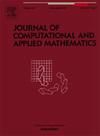A neural network-based method for pricing American options and assessing implied volatility under uncertainty
IF 2.1
2区 数学
Q1 MATHEMATICS, APPLIED
Journal of Computational and Applied Mathematics
Pub Date : 2025-05-02
DOI:10.1016/j.cam.2025.116719
引用次数: 0
Abstract
American option pricing serves as a foundational concept in modern finance and investors commonly embrace this financial derivative for its advantageous flexibility in terms of exercise timing. Within the uncertainty theory literature, the calibration of the American option pricing model has not been explored to facilitate a meaningful comparison between the model-driven option prices and those observed in the market. This study aims to fill this gap by considering the asset price dynamic as some common uncertain models, such as the geometric Liu (GL) process, uncertain mean-reverting (UMR) process, and uncertain exponential mean-reverting (UEMR) process. This paper presents a novel hybrid method to calibrate the American option pricing model based on the uncertain option pricing model and artificial neural network (ANN). The proposed hybrid structure retains the unknown parameters involved in uncertain model while incorporating neural network techniques to improve accuracy in real market applications. Given that the realization of volatility smiles can help investors identify mispriced options and make more informed investment decisions, this study undertakes the first evaluation of the volatility smile for American options in the uncertain environment using an ANN. Empirical studies on the SPY market show that uncertain models equipped with the ANN, when compared to the common option pricing models, provide more accurate evaluations of American option prices and their volatility smile.
基于神经网络的不确定条件下美式期权定价及隐含波动率评估方法
美式期权定价是现代金融的一个基础概念,投资者普遍接受这种金融衍生工具,因为它在行使时机方面具有优势的灵活性。在不确定性理论的文献中,尚未探讨对美国期权定价模型的校准,以便将模型驱动的期权价格与市场观察到的期权价格进行有意义的比较。本研究旨在通过将资产价格动态视为一些常见的不确定模型,如几何刘(GL)过程、不确定均值回归(UMR)过程和不确定指数均值回归(UEMR)过程来填补这一空白。提出了一种基于不确定期权定价模型和人工神经网络(ANN)的美式期权定价模型校正方法。该混合结构保留了不确定模型中涉及的未知参数,同时结合神经网络技术提高了实际市场应用的准确性。鉴于波动率微笑的实现可以帮助投资者识别错价期权并做出更明智的投资决策,本研究首次使用人工神经网络对不确定环境下美式期权的波动率微笑进行了评估。SPY市场的实证研究表明,与普通期权定价模型相比,配备人工神经网络的不确定模型能够更准确地评估美式期权价格及其波动率。
本文章由计算机程序翻译,如有差异,请以英文原文为准。
求助全文
约1分钟内获得全文
求助全文
来源期刊
CiteScore
5.40
自引率
4.20%
发文量
437
审稿时长
3.0 months
期刊介绍:
The Journal of Computational and Applied Mathematics publishes original papers of high scientific value in all areas of computational and applied mathematics. The main interest of the Journal is in papers that describe and analyze new computational techniques for solving scientific or engineering problems. Also the improved analysis, including the effectiveness and applicability, of existing methods and algorithms is of importance. The computational efficiency (e.g. the convergence, stability, accuracy, ...) should be proved and illustrated by nontrivial numerical examples. Papers describing only variants of existing methods, without adding significant new computational properties are not of interest.
The audience consists of: applied mathematicians, numerical analysts, computational scientists and engineers.

 求助内容:
求助内容: 应助结果提醒方式:
应助结果提醒方式:


